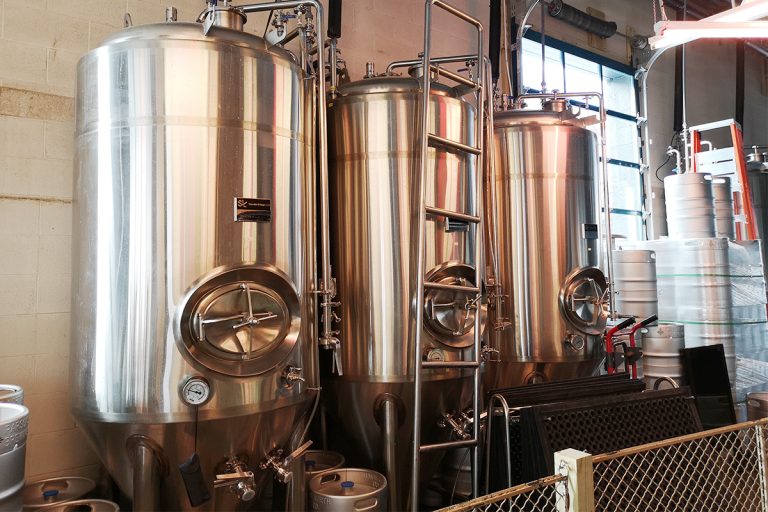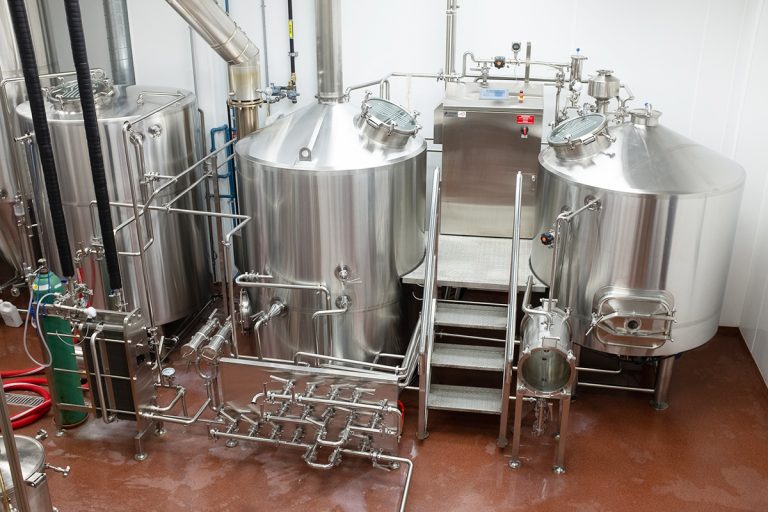
How Can You Control The Alcohol Content in Beer?

Understanding Alcohol Content in Beer
What is Alcohol by Volume (ABV)
The Role of Alcohol in Beer
Alcohol plays a multifaceted role in beer, significantly influencing its sensory and physical properties:
- Flavor Profile: Alcohol contributes to the overall flavor complexity of beer. In moderate amounts, it can enhance the perception of other flavors, providing a warming sensation and adding depth. In higher concentrations, alcohol can impart a stronger, sometimes solvent-like flavor, which might be desirable in certain styles like imperial stouts or barleywines.
- Mouthfeel and Body: Alcohol affects the viscosity and mouthfeel of beer. Higher alcohol content can make beer feel fuller and more substantial on the palate, while lower alcohol levels tend to result in a lighter, more refreshing mouthfeel.
- Aroma: Alcohol volatility means it can significantly impact the aroma of beer. It can carry aromatic compounds from hops and yeast, enhancing the overall aromatic experience. In some cases, higher alcohol levels can also bring out ester and phenol compounds, contributing to fruity or spicy notes.
- Preservation: Alcohol acts as a natural preservative, extending the shelf life of beer by inhibiting the growth of certain spoilage organisms. This preservative effect can be used for aged, and higher-ABV beers.
- Balance: The balance between alcohol content, sweetness, bitterness, and acidity can help create a well-balanced beer. The right alcohol content helps to harmonize these elements, ensuring that no single characteristic dominates the taste.
- Perceived Strength: The ABV can also influence the perceived strength and drinkability of beer. Beers with higher ABV are often sipped slowly and savored, while lower ABV beers, such as session ales, are designed for easy drinking over extended periods.

The Basics of Alcohol Production in Beer
Malting
Malting is the initial phase where raw barley or other grains are converted into malt, a key ingredient in beer. The process involves three main steps:
- Steeping: Barley grains are soaked in water to increase their moisture content, which initiates germination.
- Germination: The wet grains are spread out and allowed to germinate. During this stage, enzymes are activated that break down the starches in the grain into fermentable sugars.
- Kilning: After a few days of germination, the grains are dried in a kiln to stop the germination process. The temperature and duration of kilning influence the color and flavor of the malt, with higher temperatures producing darker, more roasted malts.
Mashing
Mashing is the process of mixing crushed malt with hot water to convert the starches into fermentable sugars. This step involves:
- Mixing: The malt is combined with water in a mash tun, creating a porridge-like mixture called the mash.
- Temperature Control: The mash is typically heated to specific temperatures (usually between 62-70°C or 143-158°F) to activate enzymes like amylase, which break down starches into simpler sugars.
- Saccharification: Enzymatic activity converts the starches into fermentable sugars such as maltose, as well as unfermentable dextrins which contribute to the beer’s body.
Boiling
After mashing, the resulting liquid, known as wort, is separated from the grain husks and boiled. The boiling process serves multiple purposes:
- Sterilization: Boiling sterilizes the wort, killing any unwanted bacteria and microorganisms.
- Hop Addition: Hops are added during boiling to impart bitterness, flavor, and aroma to the beer. The timing of hop additions affects these characteristics.
- Concentration: Boiling also evaporates excess water, concentrating the wort and increasing the potential alcohol content.
Fermentation
Fermentation is the phase where yeast converts fermentable sugars in the wort into alcohol and carbon dioxide. This stage involves:
- Pitching Yeast: Selected yeast strains are added to the cooled wort. The choice of yeast strain significantly impacts the flavor profile and alcohol content.
- Primary Fermentation: Yeast metabolizes the sugars, producing alcohol, CO2, and various flavor compounds. This stage typically lasts one to two weeks.
- Temperature Control: Maintaining an optimal fermentation temperature maintains the health and activity of the yeast. Higher temperatures increase fermentation speed and alcohol production, but can also produce unwanted flavors.
Conditioning
Conditioning, also known as maturation, is the final stage where the beer is aged to develop its flavors and carbonation. This phase includes:
- Secondary Fermentation: Sometimes beer undergoes a secondary fermentation, often in a separate vessel, to further refine flavors and carbonation.
- Aging: The beer is allowed to age for a period ranging from a few weeks to several months. During this time, yeast and other particles settle, and flavors mellow and integrate.
- Carbonation: Natural or forced carbonation is applied to achieve the desired level of carbonation.
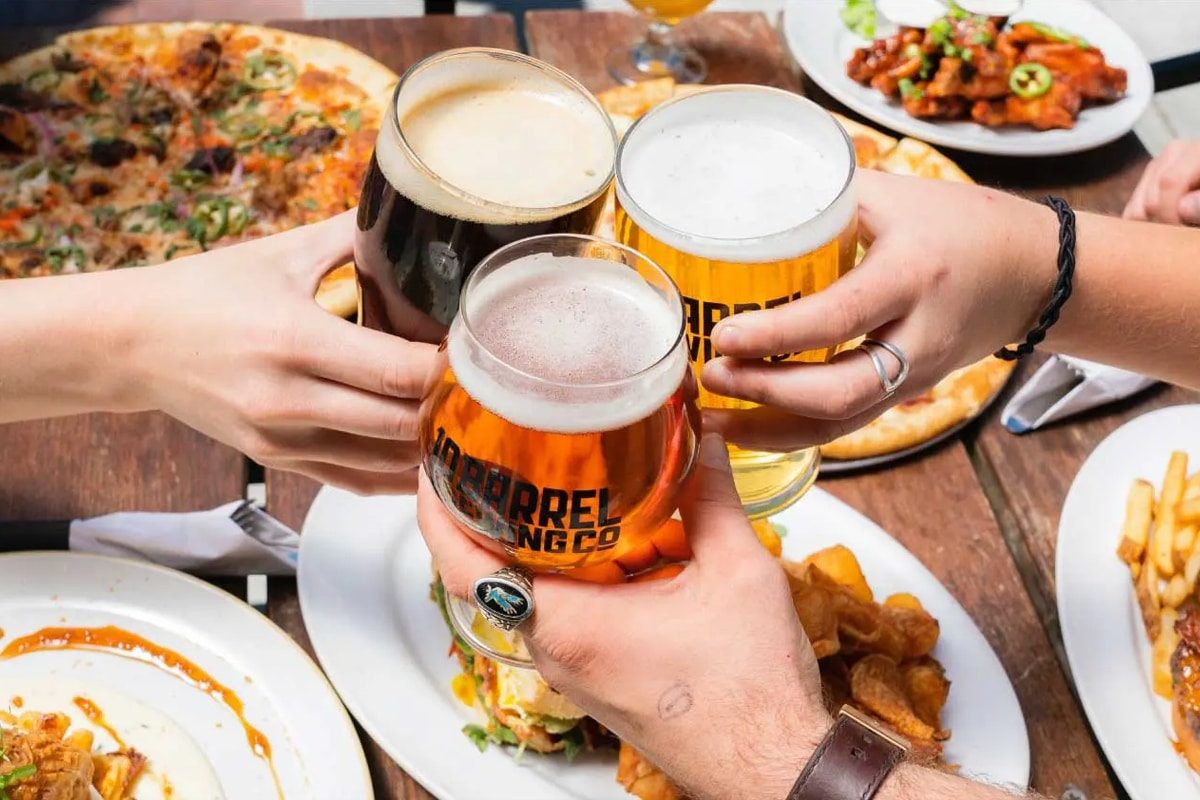
Key Factors Influencing Alcohol Content
Grain Bill
The grain bill, or the mixture of grains used in brewing, is the primary source of fermentable sugars, which yeast converts into alcohol. The composition of the grain bill directly influences the potential alcohol content:
- Malt Quantity: Increasing the amount of malt in the grain bill raises the concentration of fermentable sugars, leading to higher potential alcohol content.
- Malt Type: Different malts have varying levels of fermentable sugars. High-extract malts, such as pale malt, contribute more fermentable sugars compared to specialty malts like crystal or roasted malts.
- Adjuncts: Adding adjuncts like corn, rice, or sugar can increase the fermentable sugar content without significantly affecting the flavor profile, thus boosting alcohol content.
Mash Temperature
Mash temperature is a critical factor that determines the types of sugars produced during the mashing process:
- Lower Mash Temperatures (62-64°C or 143-147°F): These temperatures favor the production of fermentable sugars by activating enzymes like beta-amylase. This results in a higher potential alcohol content.
- Higher Mash Temperatures (68-70°C or 154-158°F): These temperatures produce more unfermentable sugars due to the activity of alpha-amylase, leading to a lower alcohol content and a fuller body in the final beer.
Boiling Time
The duration of the boiling process affects the concentration of the wort:
- Extended Boiling: Longer boiling times concentrate the wort by evaporating water, increasing the gravity and potential alcohol content.
- Boiling Intensity: The vigor of the boil can also influence concentration. A more vigorous boil evaporates water more quickly, concentrating sugars and increasing potential alcohol content.
Yeast Strain
The choice of yeast strain significantly impacts the alcohol content:
- Alcohol Tolerance: Different yeast strains have varying alcohol tolerances. High-alcohol-tolerant strains can ferment more sugars and produce higher alcohol content before becoming inhibited.
- Fermentation Efficiency: Some yeast strains are more efficient at converting sugars into alcohol, resulting in higher alcohol content. Others may produce more byproducts like esters and fusel alcohols, affecting flavor and overall alcohol yield.
Fermentation Temperature
Fermentation temperature influences yeast activity and the rate of fermentation:
- Higher Fermentation Temperatures: These can increase yeast activity, leading to faster fermentation and potentially higher alcohol content. However, they can also produce unwanted flavors if not carefully controlled.
- Lower Fermentation Temperatures: These result in slower, more controlled fermentation, which can yield a cleaner flavor profile but may take longer to achieve the desired alcohol content.
Oxygen Levels
Oxygen levels in the wort before fermentation affect yeast health and activity:
- Proper Oxygenation: Adequate oxygen levels help yeast cells reproduce and ferment sugars efficiently, leading to higher alcohol content.
- Oxygen Deprivation: Insufficient oxygen can stress yeast cells, resulting in sluggish fermentation and lower alcohol content.
Fermentation Time
The duration of fermentation affects the final alcohol content:
- Extended Fermentation: Allowing sufficient time for fermentation ensures that yeast fully converts available sugars into alcohol. Rushed fermentation can leave residual sugars, resulting in lower alcohol content.
- Monitoring Gravity: Regularly monitoring the specific gravity of the wort during fermentation helps determine when fermentation is complete and if additional time is needed.
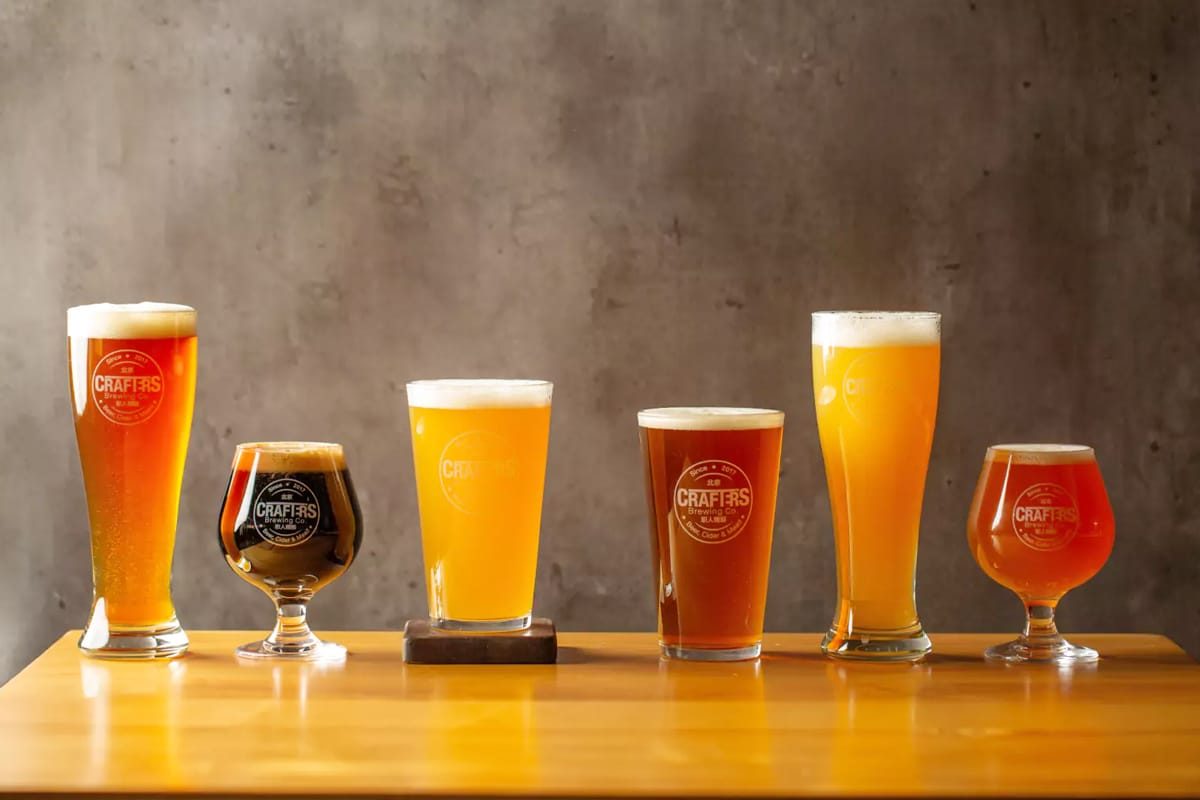
Methods to Control Alcohol Content
Adjusting the Grain Bill
- Increase Malt Quantity: Adding more malt to the grain bill raises the concentration of fermentable sugars, which can increase the potential alcohol content.
- Select High-Extract Malts: Using malts with a high extract potential, such as pale or pilsner malts, provides more fermentable sugars.
- Incorporate Adjuncts: Adding adjuncts like corn, rice, or sugar can boost fermentable sugar levels without significantly altering flavor, resulting in higher alcohol content.
Modifying Mash Temperature and Time
- Lower Mash Temperatures: Setting the mash temperature between 62-64°C (143-147°F) favors the production of fermentable sugars, increasing potential alcohol content.
- Higher Mash Temperatures: Setting the mash temperature between 68-70°C (154-158°F) produces more unfermentable sugars, resulting in lower alcohol content and a fuller body.
- Extended Mash Time: Allowing the mash to rest longer at the desired temperature can enhance the conversion of starches to fermentable sugars, increasing potential alcohol content.
Boil Duration and Intensity
- Extend Boil Duration: Boiling the wort for a longer time evaporates more water, concentrating sugars and increasing the wort’s gravity, which can lead to higher alcohol content.
- Increase Boil Intensity: A vigorous boil can accelerate water evaporation, further concentrating the wort and increasing potential alcohol content.
Selecting Appropriate Yeast Strains
- High-Alcohol Tolerant Strains: If you want to brew beer with a higher alcohol content, you need to choose yeast strains that are highly tolerant of alcohol. These strains can ferment more sugars before becoming inhibited.
- Efficient Fermentation Strains: Select yeast strains known for their efficient fermentation capabilities to maximize alcohol production from available sugars.
- Flavor Profile Considerations: Different yeast strains contribute unique flavors. Choose strains that complement the desired flavor profile while achieving the target alcohol content.
Controlling Fermentation Temperature
- Higher Fermentation Temperatures: Increase fermentation temperatures slightly to boost yeast activity, which can accelerate fermentation and increase alcohol content. Monitor closely to avoid off-flavors.
- Lower Fermentation Temperatures: Maintain lower fermentation temperatures for slower, more controlled fermentation, leading to cleaner flavors and potentially lower alcohol content.
Oxygen Management
- Proper Oxygenation: Ensure adequate oxygen levels in the wort before fermentation. Proper oxygenation promotes healthy yeast activity and efficient sugar conversion, leading to higher alcohol content.
- Avoid Oxygen Post-Fermentation: Minimize oxygen exposure after fermentation to prevent oxidation, which can affect flavor stability and quality.
Fermentation Duration and Monitoring
- Extended Fermentation: Allow fermentation to continue until the yeast has fully converted available sugars, ensuring maximum alcohol production. Monitor gravity readings to determine when fermentation is complete.
- Gravity Readings: Regularly monitor specific gravity during fermentation to track progress and make necessary adjustments. The difference between original gravity (OG) and final gravity (FG) indicates the amount of sugar converted to alcohol.
Dilution Post-Fermentation
- Calculate Dilution: To reduce alcohol content, carefully calculate the amount of water needed to dilute the finished beer to the desired ABV. Ensure proper mixing to maintain flavor balance.
- Sterile Water Addition: Use sterile water to avoid contamination and maintain beer quality.
Blending Different Batches
- Blend High and Low Alcohol Batches: Combine batches of beer with different alcohol contents to achieve the desired final ABV. This method allows for fine-tuning without altering the brewing process for each batch.
- Flavor Integration: Allow blended batches to age together to integrate flavors and achieve a harmonious final product.
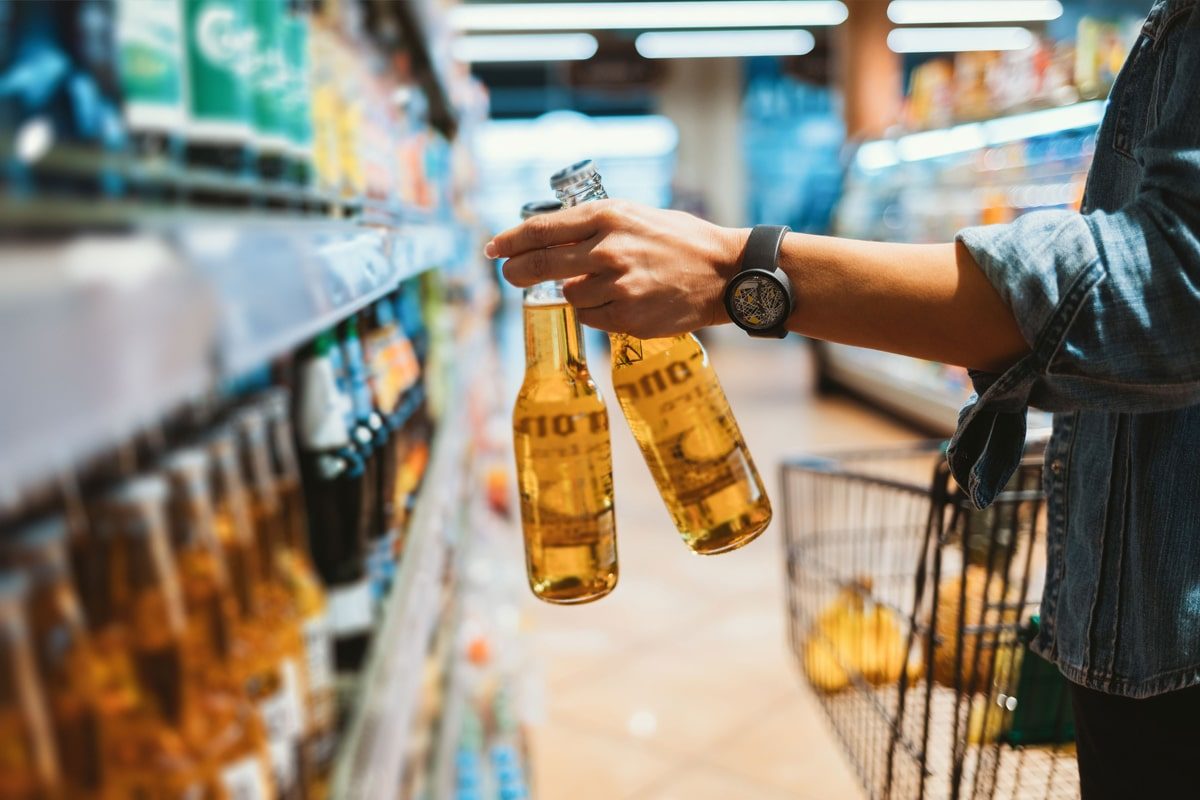
Challenges and Considerations
Flavor Balance
- Alcohol and Flavor Perception: Alcohol content significantly impacts the flavor profile of beer. Higher alcohol levels can enhance the perception of sweetness and warmth, while lower alcohol levels may highlight other flavors such as bitterness and hop aroma. Brewers must carefully balance these elements to create a harmonious beer.
- Malt and Hop Balance: Adjusting the grain bill and hop additions to align with the desired alcohol content is crucial. High-alcohol beers often require a robust malt backbone to support the increased alcohol, while low-alcohol beers need a careful balance to avoid being overly thin or watery.
- Adjuncts and Additives: The use of adjuncts and additives to adjust alcohol content must be done with consideration of their impact on flavor. Ingredients like sugar, honey, or fruit can alter the beer’s taste and mouthfeel, necessitating adjustments to other recipe components.
Consistency
- Batch-to-Batch Variability: Maintaining consistent alcohol content across multiple batches is challenging. Variations in ingredient quality, environmental conditions, and brewing techniques can all impact the final product. Implementing stringent quality control measures and standard operating procedures helps reduce variability.
- Measurement Accuracy: Accurately measuring ingredients, temperature, and specific gravity readings can help achieve consistent alcohol content. Investing in precision equipment and training employees to use it properly can help maintain consistent brewing.
- Process Control: Automated systems and real-time monitoring can enhance process control, allowing brewers to make timely adjustments to ensure each batch meets the desired specifications. Consistency in fermentation conditions, such as temperature and oxygen levels, is particularly important.
Regulatory Compliance
- Labeling Requirements: Different regions have specific regulations regarding the labeling of alcohol content. Ensuring that the ABV is accurately reported on labels is essential for compliance. Regular testing and documentation are necessary to meet these standards.
- Legal Limits: Some jurisdictions have legal limits on the maximum alcohol content for certain types of beer. Brewers must be aware of these limits and adjust their processes accordingly to avoid legal issues.
- Health and Safety Regulations: The production of high-alcohol beers may involve additional health and safety considerations, such as the handling and storage of flammable materials. Compliance with safety regulations ensures a safe working environment.
Consumer Preferences
- Market Demand: Understanding consumer preferences is key to producing beers that will be well-received. Some markets may favor high-alcohol craft beers, while others may prefer lower-alcohol session beers. Conducting market research and engaging with consumers can provide valuable insights.
- Taste and Experience: Consumers’ taste preferences can vary widely. Some may appreciate the complexity and warmth of a high-alcohol beer, while others may prefer the lightness and drinkability of a lower-alcohol option. Offering a diverse range of products can cater to different preferences.
- Health Trends: Growing awareness of health and wellness has led to increased demand for lower-alcohol and non-alcoholic beers. Brewers can capitalize on this trend by developing products that appeal to health-conscious consumers without compromising on flavor and quality.

Special Techniques for Low and Non-Alcoholic Beer
Arrested Fermentation
Arrested fermentation involves halting the fermentation process before the yeast has converted all fermentable sugars into alcohol. This technique can be achieved through several methods:
- Rapid Cooling: Cooling the wort or beer quickly to a temperature that inhibits yeast activity and stops fermentation. This method requires precise temperature control and rapid chilling equipment. The yeast is then filtered out or removed to prevent reactivation.
- Filtration: Removing yeast from the wort or beer through filtration stops fermentation. Microfiltration or centrifugation can be used to separate yeast cells, ensuring that the remaining beer has low alcohol content.
- Chemical Inhibitors: Adding chemical inhibitors such as potassium sorbate or sodium metabisulfite can halt yeast activity. These additives prevent further fermentation, ensuring low alcohol content. Care must be taken to use appropriate levels to avoid affecting flavor.
Challenges and Considerations
- The residual sweetness from unfermented sugars can lead to a sweeter beer, requiring a careful balance of other ingredients.
- Risk of contamination if yeast is not entirely removed or inactivated.
- Maintaining desired flavor profiles can be challenging due to incomplete fermentation.
Vacuum Distillation
Vacuum distillation is a method that removes alcohol from fully fermented beer through evaporation under reduced pressure:
- Evaporation Under Vacuum: The beer is placed in a vacuum chamber, which lowers the boiling point of alcohol. At reduced pressure, alcohol evaporates at a lower temperature, minimizing the impact on flavor compounds.
- Condensation and Collection: The evaporated alcohol is then condensed and removed, leaving behind a low or non-alcoholic beer.
Challenges and Considerations
- High equipment costs and energy requirements.
- Potential flavor loss if not carefully controlled.
- Requires precise operation to maintain consistency and quality.
Reverse Osmosis
Reverse osmosis is a filtration technique that separates alcohol and water from the beer:
- Membrane Filtration: The beer is passed through a semi-permeable membrane under pressure. The membrane allows water and alcohol molecules to pass through while retaining larger flavor and color compounds.
- Recombination: The alcohol is removed, and the water is recombined with the remaining beer concentrate. This process retains the beer’s flavor and aroma while reducing alcohol content.
Challenges and Considerations
- Requires specialized equipment and maintenance.
- Potential loss of some volatile flavor compounds.
- Can be energy-intensive.
Use of Special Yeast Strains
Special yeast strains designed for low-alcohol beer production can be used to produce beers with minimal alcohol content:
- Low-Alcohol Yeast Strains: These yeast strains are engineered or selected for their ability to produce minimal alcohol during fermentation. They metabolize sugars differently, resulting in lower alcohol production.
- Cold-Fermenting Yeasts: Certain yeast strains are more active at lower temperatures, producing less alcohol and more non-alcoholic byproducts. This method requires precise temperature control to optimize yeast performance.
Challenges and Considerations
- Finding the right strain that produces the desired flavor profile can be difficult.
- May require adaptation of traditional brewing processes.
- Potential for off-flavors if yeast behavior is not well-understood.

Summary



